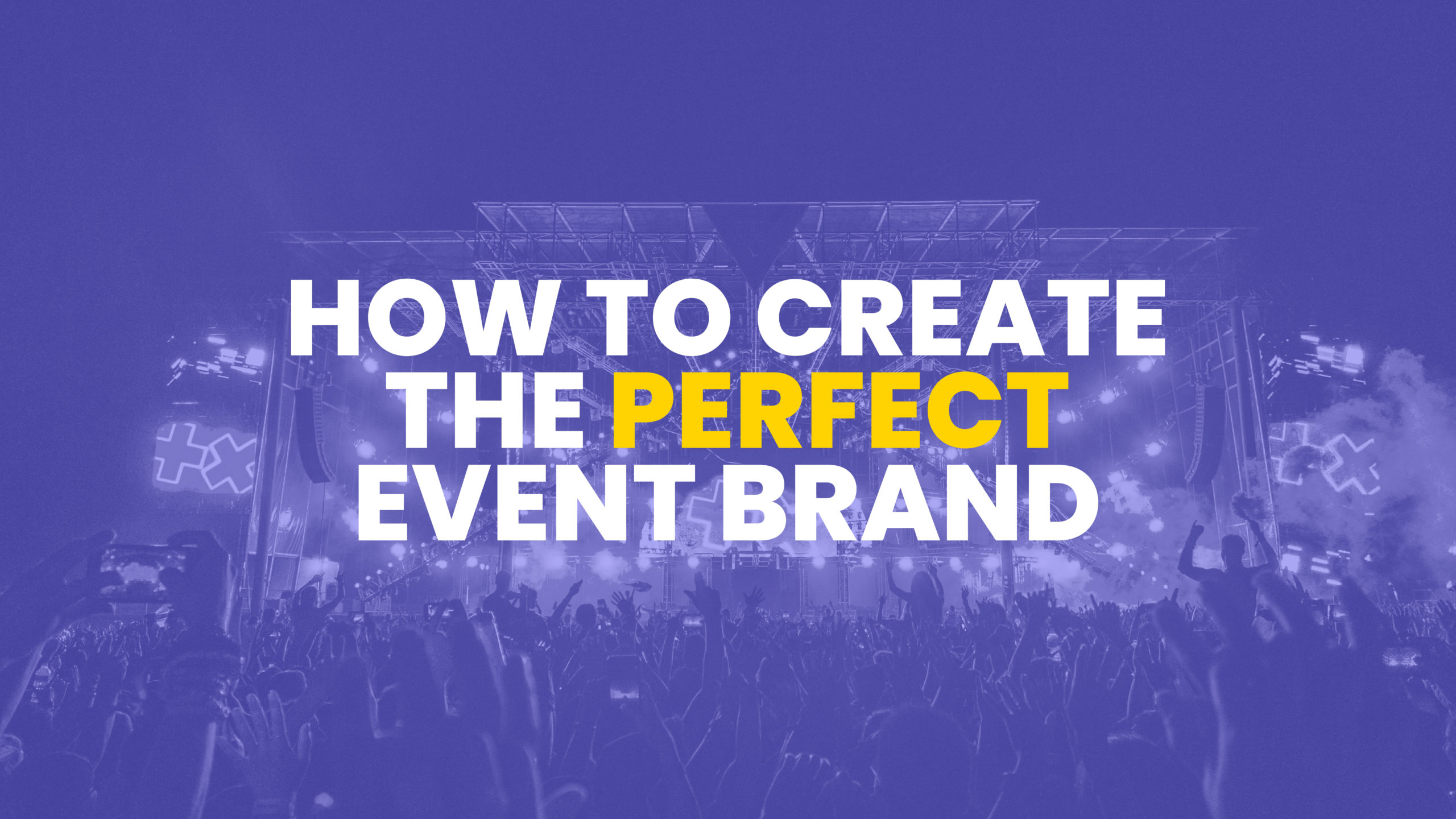
In Module 3 of The Event Crowd’s Event Management Diploma, Steph Essex; Founder of Flyhawk, Viper 10, and former Creative Director of Bournemouth 7s Festival, discusses the importance of branding in relation to events.

The branding of an event can be its make-or-break. It’s important to understand how consumers relate to the story, background, and personality of your event brand. These aspects allow brands to build trust, authenticity and loyalty between themselves and their consumers, keep repeat-customer retention high, and deliver on the best possible outcomes for their attendees. Branding is often conflated with a logo and event colours, but it is so much more than that. Events come and go often, but the ones that last are the ones who develop from an authentic beginning, and generate a loyal customer base who trust the event to do what it says it will.
In order to create a brand image that perfectly aligns with your event, we use the ‘DECI’ model:
With everything that goes into putting on a live event, branding might seem like it is fixating on small, superficial details. In reality it has a deep impact on your potential attendees and their willingness to attend your event.
Firstly, as yourself the following questions about your event and make a note of the answers:
These answers and ideas form the foundations of your brand, your taglines, messaging, and your stories. Studies show that 50% of consumers worldwide now buy based on a brand’s value and impact, so this is something that is really important for you to consider when building your brand.
“People don’t buy what you do, they buy why you do it.” – Steph Essex
As part of the discovery process, it’s important to research competitor events. Never try to imitate exactly what the other events are doing, but be very aware of what they do and don’t do well. One of the biggest brand building goals is to differentiate from competition and convince a customer to purchase from you over them.
Once you’ve discovered your purpose and researched your competitors, what next?
Now it’s time to determine your target audience, this is the foundation of building your brand. The key is to get specific; you can’t be all things to all people, so you need to find your niche and nail it. This also allows you to understand your brand buyer persona, including:
When trying to reach your target market, bear in mind that different demographics have their attention on different social media platforms these days, so make sure your brand is on the right platforms and that you’re using those platforms correctly, for example there is no point trying using your Facebook page as a blog!
Your mission statement is your why, it is the heart and soul of your company, and sticking to it is vital to creating and maintaining a loyal following. The goal is not to do business with every single person that needs what you have, the goal is to do business with people that believe what you believe, and one way you put this across is in your brand voice. Your brand voice is the one of the key parts about branding, it’s all about how you communicate with your customers and how they respond to you. Think of your brand as a person, have a brainstorm and work out the type of person your brand would be, from:
Starting a brand that is memorable means you have to dig deep and figure out what you offer that no one else is offering. Why are you unique? Figure it out and then tell people! Give them a reason to choose your event over another.
This is not just a laundry list of the features your event offers; this is about how you provide value that improves attendees’ experiences in a way other events do not. Event attendees are looking for an experience tailored to their needs, backed by genuine human interaction. This can be as simple as sharing behind the scenes content, telling stories about real experiences but most importantly being truthful and transparent.
One company that prides itself on being truthful and transparent is Gymshark. This company has exploded over the past 5-7 years, and in 2020 it was valued at over $1 Billion. However, what many people don’t know is that in 2015 they had a huge website outage on Black Friday. When this happened, it stopped all their sales and created problems for lots of customers trying to access their carts and orders. Instead of riding it out and acting like nothing happened, they got the site back up and running, discounted or compensated their customers, and in those fulfilled orders the CEO hand wrote around 2,500 apology letters to each of the affected customers. It’s safe to say that a lot of those who received letters are now some of Gymshark’s biggest fans.
When you think about building a brand, visuals probably come to mind first, but we haven’t even touched on these until this stage. Brands often make the mistake of rushing the “logo design” part too early, they spend money with designers and end up changing the look later in the process. Our number one tip is to just be patient here!
Things to consider visually:
Your logo is your identity and the visual recognition of your company promise. You might want to create your brand guidelines at this point which will include things like the logo size and placement. When thinking about your colour palette, do you want softer colours, or darker more intense colours? What font is suitable for your brand? Is your brand suited to hard hitting headline fonts, or softer, lowercase ones?
Your photography and image style will also be really important at this point, for example if you have an event that is bubbly and fun, the photography needs to match this style. There is no point getting a photographer on board that will create a load of moody and intense shots at your event, because that doesn’t fit the brand or style of your event.
A side note, be very aware of other people’s trademarks, look into this before signing off on any logo design or branding. It can be a very expensive process to change this.
The process of building your event brand will never stop. Your brand should be reflected in everything that your attendees experience; from purchasing a ticket, straight through to after they have left your event.
On digital platforms, ensure your brand looks the same. Your website and social media should be visually branded, and with your chosen voice for engagement. Brand building must stay consistent, inconsistency will confuse your customers and make long term brand building more difficult. Once you establish a brand voice, use it for every piece of content you create.
Brand memorability is organic something that should be constructed within the DNA of the brand and how it’s experienced. Memorability is made up of the distinctive traits your brand exhibits and the disruptive tactics your brand chooses to use to stick in people’s minds over time. Brand awareness is an indication of how many people have heard of your brand, brand memorability on the other hand is your brand’s grip and is the degree to which your brand is able to cut through the sea of countless others.
So how can you make your brand unforgettable? The secret lies in creating surprisingly memorable moments within the end-to-end customer journey. Think like a consumer for a second. Try to remember a moment that blew away your expectations of a particular brand. The key to building brand memorability is finding the parts of your brand experience which no other brand is making memorable and choosing your strategic point of difference.
There will be plenty of opportunities to do this, pre, during and post event. It might be how someone receives their ticket, or their first experience when they walk into your event.
As part of our Event Management Diploma, we have a specialist lecture on event branding, taught by Steph Essex, founder of Viper 10 and former Creative Director of Bournemouth 7s Festival. Click here to find out more about the course and our other event experts.